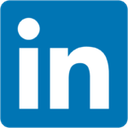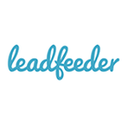These 8 levers for optimising your customer acquisition strategy
Offering top-quality products and services is one thing. Having customers to sell them to and keep them loyal is quite another! 😁 To grow your business, it's essential to build brand awareness and ensure regular sales.
But how do you capture the attention of an increasingly fickle customer base over the long term? 🤔 This is where a good customer acquisition strategy is essential.
In this article co-written with acquisition expert Jérémy Lacoste, zoom in on the 8 best customer acquisition strategies , with examples to back them up!
What exactly is customer acquisition?
Customer acquisition: definition
Customer acquisition refers to all the resources deployed by companies to attract and retain consumers. In other words, the customer acquisition strategy encompasses the various stages involved in successively transforming a prospect into a lead, and then into a customer 🤝.
Also known as customer acquisition, the concept of customer acquisition mainly refers to :
- marketing (often digital),
- communication
- as well as various sales techniques.
💡The aim is to renew the customer portfolio while taking care to build loyalty. As you are no doubt aware, maintaining a lasting relationship with a consumer is far more profitable than constantly canvassing for new prospects!
The levers of customer acquisition
Knowing your customers and their buying patterns is undoubtedly the main lever in customer acquisition. The more accurately a company can target its customers' needs, the more likely it is to respond favourably in a variety of ways.
These can take a variety of forms:
- advertising ;
- promotions
- telephone canvassing
- sending samples ;
- etc.
In short, the levers that can be used to encourage customer acquisition are essentially based on marketing and sales logic 😉.
A word from the Expert
A company's growth is built on its ability to renew its customer base and combat natural churn. We also need to activate flow levers (SEA, partnerships, social ads), along with stock levers (content, emails, sponsorship, etc.), so as to create permanent traction.
Two recommendations: avoid any dependence on a single acquisition channel and remember to model the profitability of sourcing by taking into account the re-purchase rate. As a reminder, recruiting a new customer costs 3 times more than retaining one.

The 8 best customer acquisition strategies for generating traffic
When it comes to customer acquisition strategies, there are many possibilities. Depending on the size and resources of the company, certain means may be favoured over others.
Here, we're going to focus on the channels and techniques that help to increase the visibility, appeal and trust that a customer can bring to a product or brand 👍. Search Engine Optimisation (SEO) and Search Engine Advertising (SEA).
SEO (Search Engine Optimization)
First of all, we can look at the importance of natural referencing (SEO). For those who don't yet know, SEO refers to all the processes used to boost a site's organic traffic . By organic traffic, we mean traffic that comes from natural results, i.e. that is not sponsored and therefore costs virtually nothing!
To maximise its chances of appearing in the first line of SERP results (the page displayed by a search engine following validation of a query 💻), a company needs to master the three fundamental principles of SEO :
- Technical: how is your site designed, is it well structured, fluid, etc.?
- Semantics : the sinews of the SEO war, i.e. using the most relevant expressions and keywords to rank at the top of the SERPs.
- Popularity: the more popular and reliable a site is considered to be, the more naturally it will be promoted by search engines.
👉 Example: Let's imagine a company specialising in Alpaca wool jumpers (and why not? 🦙 ). To make a name for itself and attract new customers, it needs to position itself on targeted queries in order to appear on search engines. This means producing and distributing digital content (blog articles, infographics, etc.).
For example, an internet user who is curious to find out more about the specific characteristics of alpaca wool might come across the company's website after typing the following query: "advantages of alpaca wool".
However, it should be pointed out that SEO requires a huge amount of time and investment! It's not a sprint, it's a long-distance race. It's up to you to offer quality digital content on a regular basis if you want to boost your SEO and attract new customers 💪.
SEA (Search Engine Advertising)
SEA differs from SEO in its keyword bidding system. In fact, what is sometimes awkwardly called paid search engine optimisation is based on an advertising system 💵. In layman's terms, what we're talking about here is paying the search engine to appear in the top results of the SERP. Unsurprisingly, Google Ads is the best-known tool in this field.
SEA has many advantages. In particular, its targeting options are what make it so interesting. It is possible to make your ad appear in priority among Internet users according to :
- their age 👴;
- gender 💁♀️ ;
- their place of residence 🏠 ;
- the device used (computer, tablet or smartphone) 📱 ;
- etc.
Paid search is therefore particularly useful for one-off digital promotional campaigns. However, the success of these campaigns depends on the budget allocated and the competitiveness of the targeted keywords. The more competitive a market, the higher the price you have to pay to appear in the first results 📈.
Here again, various criteria need to be taken into account in addition to the amount allocated to the bids:
- the expected click-through rate for the ad,
- the overall quality of the ad (in this case its relevance to the search established by the web user),
- the quality of the destination page (loading time, relevance, etc.).
SEA is therefore a very good way of encouraging customer acquisition through specific, perfectly targeted campaigns 🎯.
Email marketing
Outdated for some, email marketing is nonetheless an effective lever when it comes to customer acquisition. Nevertheless, it needs to be used intelligently. In other words, delivering the right message to the right person at the right time. Easier said than done, isn't it? 😁
Deploying an effective email marketing strategy can't be improvised. Its foundation takes the form of a hand-picked database. However, this tedious work is imperative.
👉 Knowing where each prospect is in the sales tunnel makes it much easier to send them content that is likely to interest them. Has a potential customer still not converted a shopping basket that's been abandoned for several weeks? Send them a reminder with a time-limited discount to inspire them to take action!
The possibilities offered by email marketing are endless. In fact, there are a good number of tools for automating your marketing processes that can save you a considerable amount of time while increasing your acquisition rate. So why deprive yourself? 😉 We'll be giving you a selection of some of these tools later in the article.
Social networks
By 2022, there will be an estimated 53 million social network users in France. The average time devoted to them on a daily basis is estimated to be around 1 hour 45 minutes. Enough to give pause for thought to companies that still play down the role of these platforms in promoting their brand 🤔.
When it comes to customer acquisition on social networks, it goes without saying that a company needs to target the platforms that are best suited to it beforehand . After all, it's hard to imagine a manufacturer of medical scanners finding its way alongside the latest fashionable challenges on Tik Tok...
👉 From the consumer's point of view, the main advantage of social networks is the proximity that links them to a brand or product, as well as the reduced cost. For the company, it is therefore necessary to produce content that encourages exchange and sharing with its community.
This can take the form of :
- competitions ;
- Asking for feedback on a new product;
- sharing news about the sector of activity concerned;
- revealing what goes on behind the scenes at the company ;
- etc.
It's also not uncommon for prospects to come directly to a brand's networks to find out about a product or service. It's up to you to seize this opportunity to target their expectations and respond favourably! 🙌
As well as helping to win over new customers, social networks above all help to build customer loyalty. You have almost 2 hours of their attention on average every day, so it would be a shame to miss out.
Content marketing
Better known as content marketing, this is a particularly effective way of attracting new prospects and winning their trust. For those who don't know, it simply refers to all the content that is distributed and shared about your brand.
Content marketing includes
- publications and interactions on social networks 📱 ;
- newsletters 📨 ;
- webinars 🔍 ;
- interviews 🎤 ;
- podcasts 🎧 ;
- blog posts ✏ ;
- etc.
In short, the consumer must be able to perceive your company's identity and values behind your content marketing policy. Some of this content is destined to last. In fact, much of it acts as a gateway to your website and your sales proposals.
Content marketing is also distinguished by its informational nature and added value. It's not about churning out content. Quality takes precedence over quantity, although it is important to be regular when disseminating content.
👉 By deploying a content marketing strategy, a company aims to achieve several digital objectives:
- gain visibility and credibility ;
- develop its brand identity
- attract new prospects; and
- build loyalty among its audience and consumers.
Customer reviews
It's no coincidence that the vast majority of brands are now putting the spotlight on customer reviews on their websites. The reason? To give confidence and reassurance to prospects who are still hesitating to take the plunge.
With the rise of digital technology, word-of-mouth and customer feedback are more important than ever in driving people to buy. A glance at a few statistics will convince you of this:
- 87% of French people read customer reviews before making a purchase 🧐 (Ifop) ;
- 79% of French people trust customer reviews 🤝 (Ifop) ;
- 34% of consumers attach more importance to customer reviews than to promotions when making a decision 👍 (American Express).
Clearly, customer reviews play a decisive role in turning a prospect into a buyer. As consumers, we are increasingly being asked to share our feelings and evaluate the products and services we have paid for or subscribed to 🙋.
Consumer reviews are therefore an extremely powerful lever for customer acquisition. For a company, it is essential to pay very close attention to them. That's why we strongly recommend analysing and responding to all reviews, both positive and negative ! 👀
Partnerships
Relying on the reputation of a brand that's on a roll is an excellent way of attracting new customers. In this way, your offer gains visibility with an audience that you hadn't necessarily targeted or that had previously missed out on your content.
The terms of a partnership obviously depend on the parties involved. Generally speaking, it's an exchange of courtesies where each party promotes the other 🤝. But for this partnership to be effective, the right employee needs to be targeted. It's hard to imagine a vegan producer promoting the local butcher's shop and vice versa!
👉 It's essential to find a complementary partner whose products or services match yours. For example, you could imagine a honey producer teaming up with a confectioner to create a sweet for sale in their respective shops.
Developing this type of partnership is a good way of acquiring new customers through channels that were previously inaccessible or little used!
Free trials
"Oh, and after all, if it's free, it doesn't commit me to anything, so why deprive yourself? 🤷" is the simple - but effective - reasoning behind which many of us have succumbed to the appeal of a product or service for which we weren't necessarily originally destined 😅.
There are many advantages to a free trial for a company:
- gaining the trust of potential customers
- boosting conversion rates
- generate leads thanks to the attractiveness of the offer;
- stand out from the competition
- engage and develop customer relations.
However, offering free trials without first developing a strategy is doomed to failure ❌. There are many factors involved in turning a simple test into a subscription:
- the definition of the limits and conditions of the trial (time, tools available, etc.) ;
- the information to be provided by the customer (telephone number, email address, bank details, etc.);
- the support to be provided throughout the trial (gathering customer feedback, defining needs, etc.).
By the same token, you need to know how to communicate with your prospects at the right time . Offering a free trial to someone who is not yet ready for it can be pointless or even counter-productive. On the other hand, sending them a trial offer after they've downloaded a white paper or signed up to a newsletter, for example, is much more interesting 👍.
It should be noted that customer acquisition through free trials is mainly aimed at the B2B sector. SaaS software publishers are particularly concerned by this commercial approach 💾.
Downloads
When we talk about downloads, we can think first of all of the different content available on the company's website. The case of the white paper is a perfect illustration 📖.
To access this collection of resources, web users are often asked to enter information such as :
- identity
- their profession ;
- sector of activity
- employer ;
- contact details
- contact details, etc.
This is an excellent base for the company to build on ✅. However, the case of the white paper is primarily relevant to the B2B sphere.
Customer acquisition can also take place via another type of download. The brand's mobile application. It's hard to get closer to a customer than when you're right in their pocket!
👉To encourage people to download a mobile application, a brand can play on different aspects such as :
- the fluidity and practicality of the interface ;
- access to additional features ;
- specific promotional offers if the application is downloaded.
Once the application has been downloaded, it's easier to maintain customer relations and build long-term loyalty.
6 best practices for optimising your customer acquisition
Structure your data to manage acquisition effectively
Customer data is the black gold of digital. But what's the point of having nuggets if you don't know how to exploit them?
Start by centralising all your information in a single tool: CRM, DMP or marketing automation platform. This will give you a better understanding of your potential customers, their expectations, their disincentives and the channels they use.
✅ The cleaner, more organised and actionable your data, the more refined, targeted and profitable your customer acquisition strategy becomes.
Measure the real impact of your strategy on your reach
Start by tracking the number of customers reached on each channel:
- social networks
- advertising,
- content marketing.
Then compare this with the actual results: clicks, conversions, sales. Regularly calculate your conversion rate and your cost of acquisition. Yes, you can't improve what you don't measure. And when it comes to customer acquisition, every contact point counts!
Adapt your business model to your sales cycle
Your acquisition strategy must be aligned with your sales model.
For example, do you sell a premium product or service? Go for a long sales tunnel, with reassurance at every stage.
Are you targeting a key account customer with a complex purchase? Include in-depth content, free trials and demonstrations.
And if you're selling at low cost, go for speed. Your acquisition funnel needs to be simple, fast and effective.
Create engaging content with high conversion power
Potential customers don't convert with a simple block of text. They want concrete, living content that speaks to their needs.
Offer tailor-made content marketing: articles, videos, infographics, case studies, etc. Vary the formats and adapt them to each stage of the acquisition funnel.
☝️ For example, if a prospect is at the top of the funnel, offer them a practical guide and provide them with a comparison or demonstration.
The right content at the right time is what turns a curious click into a purchase. And sometimes into a loyal customer.
Take advantage of product recommendations and personalisation
Your potential customers want to feel understood, not buried in a generic offer. According to a study by Epsilon, 80% of consumers are more likely to make a purchase when brands offer personalised experiences.
Recommendation technologies enable you to offer the right product or service at the right time. By analysing behavioural data on browsing, purchasing or viewing, you increase your chances of capturing attention... and converting.
When it comes to personalisation, every detail counts. Emails, landing pages, advertising campaigns: everything can (and should) be adapted to your prospect's reality.
Equip your marketing team
There can be no effective customer acquisition without a well-honed toolbox. Each marketing solution contributes to optimising one or more acquisition levers. Here are the essentials you need to know (and test)👇 :
Webmecanik Pipeline
An intuitive CRM tool such as Webmecanik Pipeline helps you turn prospects into customers simply by centralising all your exchanges (email, telephone, etc.) in a comprehensive and secure way. The platform supports you in managing and monitoring your sales pipelines and opportunities with customised features:
- business predictions powered by the intelligence of Big Data,
- customisable dashboards updated in real time,
- evolution of prospect status and probability of success, etc.

Webmecanik Pipeline - CRM
TikTok for Business
Whether you're targeting acquisition or retention on social networks, you need the right tools to achieve your goals. How can you miss out on Tiktok For Business? If your target audience is on TikTok, you should be too! This dynamic and innovative platform, suitable for businesses of all sizes, helps you to develop your customer acquisition thanks to :
- Precise targeting of your potential customers,
- viral potential, enabling you to reach a large international audience,
- short, interactive content that attracts customers' interest,
- real-time analysis of your performance.
In short, increased visibility and unique opportunities to connect with potential new customers!

TikTok for Business
Lemlist
Lemlist is revolutionising email marketing and automated prospecting. Thanks to its ultra-personalised campaigns, you can engage your prospects with messages that really grab their attention. Dynamic images, integrated videos, personalised variables... each email becomes a mini-operation of seduction. This tool is particularly effective for :
- cold email prospecting,
- tracking your warm or lukewarm leads,
- rapid conversion over short cycles.
Lemlist helps you reduce the cost of acquisition by drastically improving your response rate.

lemlist
Pipedrive
Pipedrive is a visual CRM designed to track and advance your sales opportunities at a glance. Drag, drop and tick: you can track each prospect without getting lost. Thanks to its intelligent automation, Pipedrive simplifies the management of your SEA, SEO and social network campaigns. It also allows you to :
- keep control of your sales targets,
- quickly identify blockages in the funnel,
- save time on follow-up and prioritisation.

Pipedrive
LinkedIn Sales Navigator
For B2B prospecting pros, LinkedIn Sales Navigator is a war machine. It helps you identify the right contacts within your target accounts, understand what's at stake, and engage in conversation in a contextual way. The result?
- your contacts are more relevant,
- your messages are better received
- and your partnership and sales opportunities are better qualified.
A key tool for those who want to turn social networking into a genuine growth channel.

LinkedIn Sales Navigator
Outreach
Outreach allows you to orchestrate your multi-channel prospecting sequences (emails, calls, LinkedIn messages, etc.) without losing any of your personal touch. The platform centralises your exchanges, alerts you to the best times to follow up, and measures the impact of each message. In short
- you can increase the number of contacts without exhausting yourself,
- you maintain a high level of personalisation,
- boost your conversion rates without blowing your CAC.

Outreach
Leadfeeder
Leadfeeder turns your anonymous visitors into concrete opportunities. By analysing the IP addresses of companies visiting your site, it reveals potential customers who are already interested in your products or services, even without filling in a form. You can then :
- recontact these leads with a targeted message,
- adapt your marketing campaigns on the basis of page views,
- improve the relevance of your sales follow-ups.
A powerful tool for feeding your pipeline with leads that are much hotter than they look 🔥.

Leadfeeder
How do you develop a good B2B customer acquisition strategy?
In B2B, customer acquisition is based on a long, multi-touch, multi-decision-maker funnel. To succeed, you need to align your stages, channels and content. Here's how to structure your approach:
👉 Identify your buyer personas precisely: start by understanding your targets: their needs, challenges, expectations. A good persona helps you create ultra-relevant and personalised messages, from the CFO right through to the end user.
👉 Define a clear value proposition: why you rather than a competitor? Build a sales pitch that reflects a measurable ROI, operational efficiency or a genuine business solution.
Choose your channels wisely: mix inbound (SEO, content, webinars) and outbound (emails, LinkedIn, SEA, events) according to your sales cycle and your personas.
👉 Produce content tailored to each stage:
👉 Deploy a coordinated multi-channel strategy: mix SEO, SEA, email, social selling and partnerships. 💡 For example:
- SEO and content to generate qualified traffic,
- SEA to reach those who are actively searching,
- email and LinkedIn to nurture and follow-up,
- partnerships and webinars to extend your reach.
👉 Analyse and optimise continuously: collect data (open rates, conversion, CAC...) to refine your segments, messages and choice of channels. Align marketing and sales with a shared CRM and dashboards.
👉 Capitalise on advanced techniques and adopt :
- Account-Based Marketing (ABM) to target key accounts with ultra-personalised messages,
- inter-company referencing via partnerships or recommendations,
- webinars and virtual events to establish your expertise and capture targeted leads.
👉 Don't forget post-purchase: theB2B cycle continues after the sale: onboarding, support, upsell, customer testimonials. It's also an excellent way of generating referrals and fuelling a virtuous circle of growth.
Customer acquisition in a nutshell
In a nutshell, customer acquisition covers all the techniques used to attract and retain new customers. To be effective, customer acquisition must meet clearly defined strategic objectives.
By activating the right levers at the right times, a company can increase its appeal and expand its customer portfolio over the long term 💪.
Article translated from French